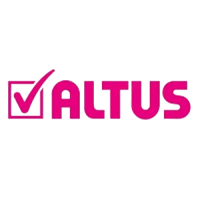4. Configuration
67
Table 4-24. Limits of the protocols by CPU
Notes:
Mapped Points: Each variable or item of a given data type is assumed to be a mapping. The same is
considered for each position of the ARRAY type. This means that if a simple variable is declared, it
will be considered a mapping and if an ARRAY type is declared, the count will be equal to the size
of the declared ARRAY. The amount of mappings increments by one when there is a simple type of
variable being declared independent of the size of the given type. Then, mapping a variable of INT
type (16-bit) in a Holding Register of symbolic Modbus drivers or a variable of type LINT (64-bit) in
four Holding Register of symbolic Modbus drivers is accounted for as just a mapping.
Symbolic MODBUS/IEC 60870-5-104 Mappings: A mapping is a relationship between an
application intern variable and an application protocol object. The limit value for the project
mappings corresponds to the sum of all the mappings made within the instances of communication
protocols and their respective devices.
MODBUS Mapping/requisitions (directly representation/symbolic, respectively): MODBUS
mapping limits (lines) for direct representation and requisitions for MODBUS by symbolic mapping.
ATTENTION:
In cases where the two types of protocol are used together, as one type is used the capacity of the
other decreases. For example, if 10240 symbolic mappings are used, it will only be possible to use
256 mappings by direct representation. The ratio between the two types of mapping is of 40
symbolic mappings to each mapping by direct representation.
NETs: Clients or Servers instances: The maximum value defined above is distributed between all
Ethernet interfaces of the system, in other words, it includes the expansion modules when they are
applied. Examples for this type of task are the MODBUS protocol instances.
COM (n): Master or Slave instances: The “n” represents the serial interfaces number, in other words,
even with the expansion modules, the value in the table will be the maximum limit per interface.
Examples for this task type are the MODBUS protocol instances.
ATTENTION
The maximum number of instances are concurrent between them, that is, between the MODBUS
RTU Master and Slave only one instance can be configured by interface in any CPU model.
Between Ethernet Client and Server protocols only four (NX3004, NX3005 and NX3010), eight
(NX3020) or sixteen (NX3030) instances can be configured by project.
Control Centers: “Control Center” is all client device connected to the CPU through protocol IEC
60870-5-104. This field informs the maximum of client devices of control center type supported by
the CPU. Correspond to the sum of all client devices of communication protocol Server IEC 60870-
5-104 (does not include master or clients from MODBUS RTU Slave, MODBUS Server and DNP3
Server protocols).
The limitations of the MODBUS protocol for Direct Representation and symbolic mapping for the
CPUs can be seen in Table 4-25 and Table 4-26, respectively.

